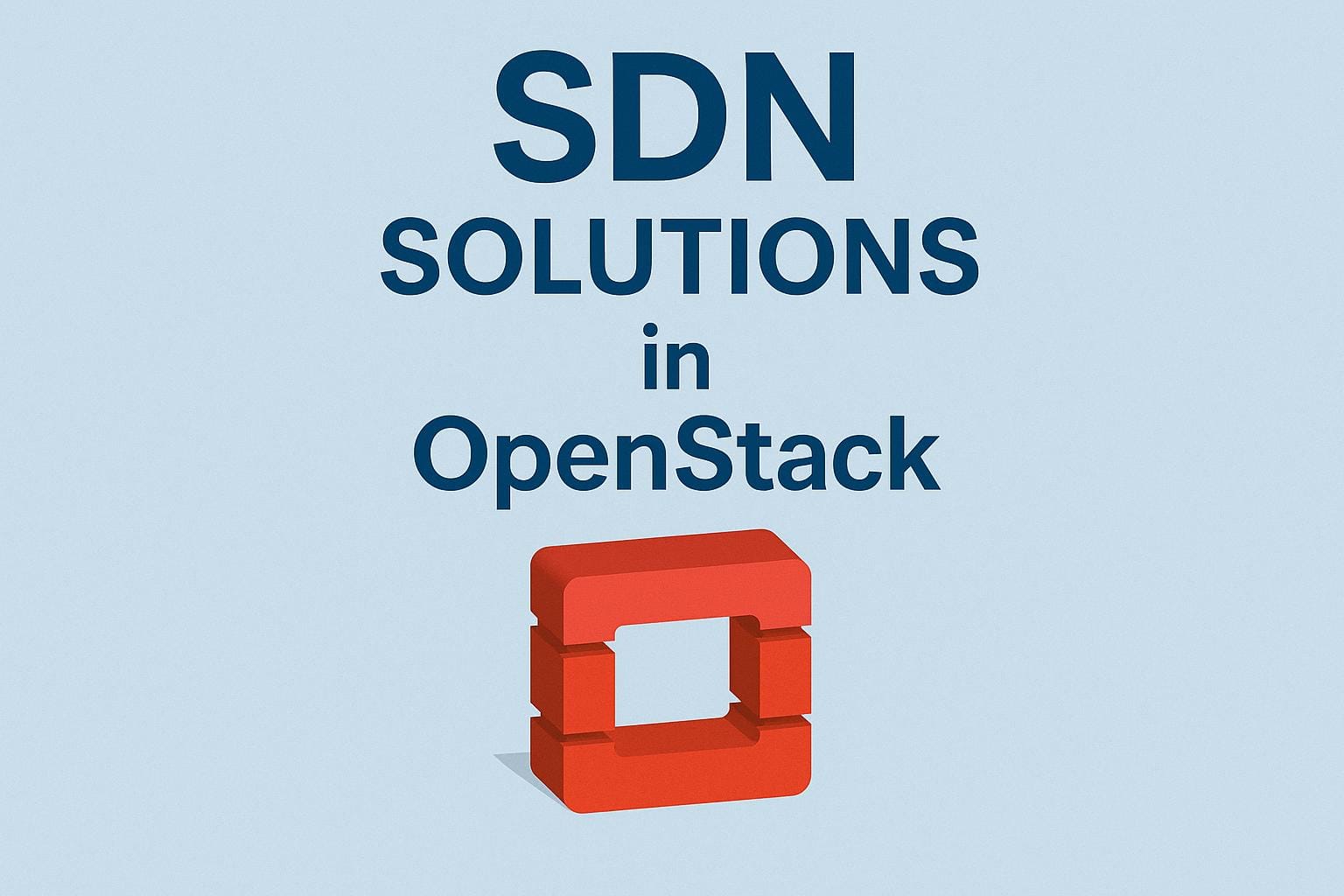
SDN Solutions in OpenStack
OpenStack’s networking component, Neutron, was built with Software-Defined Networking (SDN) in mind. Thanks to its modular, plugin-based architecture, OpenStack can integrate with a wide range of SDN solutions to provide powerful, scalable, and secure virtual networking. In this article, we explore the most commonly used SDN technologies in OpenStack, highlight their use cases, and explain the benefits they bring to cloud infrastructure.
Open vSwitch (OVS)
Open vSwitch (OVS) is the foundational virtual switch in many OpenStack deployments. It is the default backend for Neutron’s ML2 plugin and supports overlay networking using VXLAN, GRE, or Geneve.
Integration with OpenStack: OVS runs on each compute node to manage VM network interfaces and tunnel traffic between nodes. Neutron’s OVS agent configures the switch based on API-driven configurations.
Benefits:
- Tenant isolation via VLAN or VXLAN
- Automated network creation
- Foundation for advanced SDN layers
OVN (Open Virtual Network)
OVN is an SDN controller framework that works with OVS to provide a full-featured control plane for virtual networking.
Integration with OpenStack: Through the networking-ovn ML2 plugin, OVN replaces traditional Neutron agents. Controllers manage logical switches, routers, and security groups, translating Neutron configurations into OpenFlow rules on OVS.
Benefits:
- Distributed routing for better performance
- Reduced reliance on centralized agents
- Scales well in large deployments
Tungsten Fabric (OpenContrail)
Tungsten Fabric is an open-source SDN solution with a powerful centralized controller and distributed vRouter on compute nodes. It originated from Juniper Networks and supports rich networking features.
Integration with OpenStack: It integrates with Neutron via a plugin and controls virtual network topology and policies using its own API and database.
Benefits:
- Deep network segmentation and multi-tenancy
- Built-in analytics and security policy engine
- BGP EVPN support for physical integration
OpenDaylight (ODL)
OpenDaylight is a modular SDN controller that supports OpenFlow, NETCONF, BGP, and more. It is often used to manage both virtual and physical networks.
Integration with OpenStack: Through the networking-odl plugin, OpenStack Neutron communicates with ODL to configure virtual networks. ODL then programs OVS switches and physical devices.
Benefits:
- Centralized SDN brain for full-stack network control
- Flexible policy-based automation
- Suited for NFV and telco environments
Dragonflow
Dragonflow is a distributed SDN controller developed specifically for OpenStack. It eliminates centralized network nodes by running control logic on each compute host.
Integration with OpenStack: Dragonflow uses a distributed database and local controllers to apply networking logic and OpenFlow rules on each node’s OVS instance.
Benefits:
- Local routing and DHCP for low latency
- Scalable with no single point of failure
- OpenStack-native design and simplicity
Other Noteworthy Mentions
- Midonet: A distributed SDN platform that replaces Neutron agents with a custom control plane and tunnels.
- Calico: A layer 3 networking solution using BGP and iptables without overlays.
- Vendor Solutions (NSX, Cisco ACI): Proprietary SDN platforms that offer deep integrations and robust enterprise features.
Benefits of SDN in OpenStack
1. Network Segmentation & Security
- Isolate tenant traffic using overlays and firewalls
- Implement microsegmentation policies
- Enforce distributed firewall rules
2. Automation & Agility
- Rapid provisioning of networks via APIs
- Infrastructure-as-code for networking
- Dynamic updates in autoscaling environments
3. Scalability
- Support thousands of tenants with VXLAN overlays
- Avoid VLAN ID limitations
- Use distributed control for efficient routing
4. Performance Optimization
- Distributed routing improves east-west traffic
- Local DHCP and metadata services reduce latency
5. Multi-Tenant Cloud Use Cases
- SaaS providers hosting multiple isolated environments
- Dev/test/production environments on a shared cloud
- Telco NFV setups requiring service chaining and traffic inspection
SDN has revolutionized networking in OpenStack, enabling powerful features like tenant isolation, dynamic network provisioning, distributed routing, and more. Whether you start with OVS or choose a full SDN controller like OVN, Tungsten Fabric, or OpenDaylight, integrating SDN with OpenStack makes your cloud more flexible, secure, and scalable. As OpenStack continues to grow, SDN will remain a key enabler of modern, programmable cloud networking.
